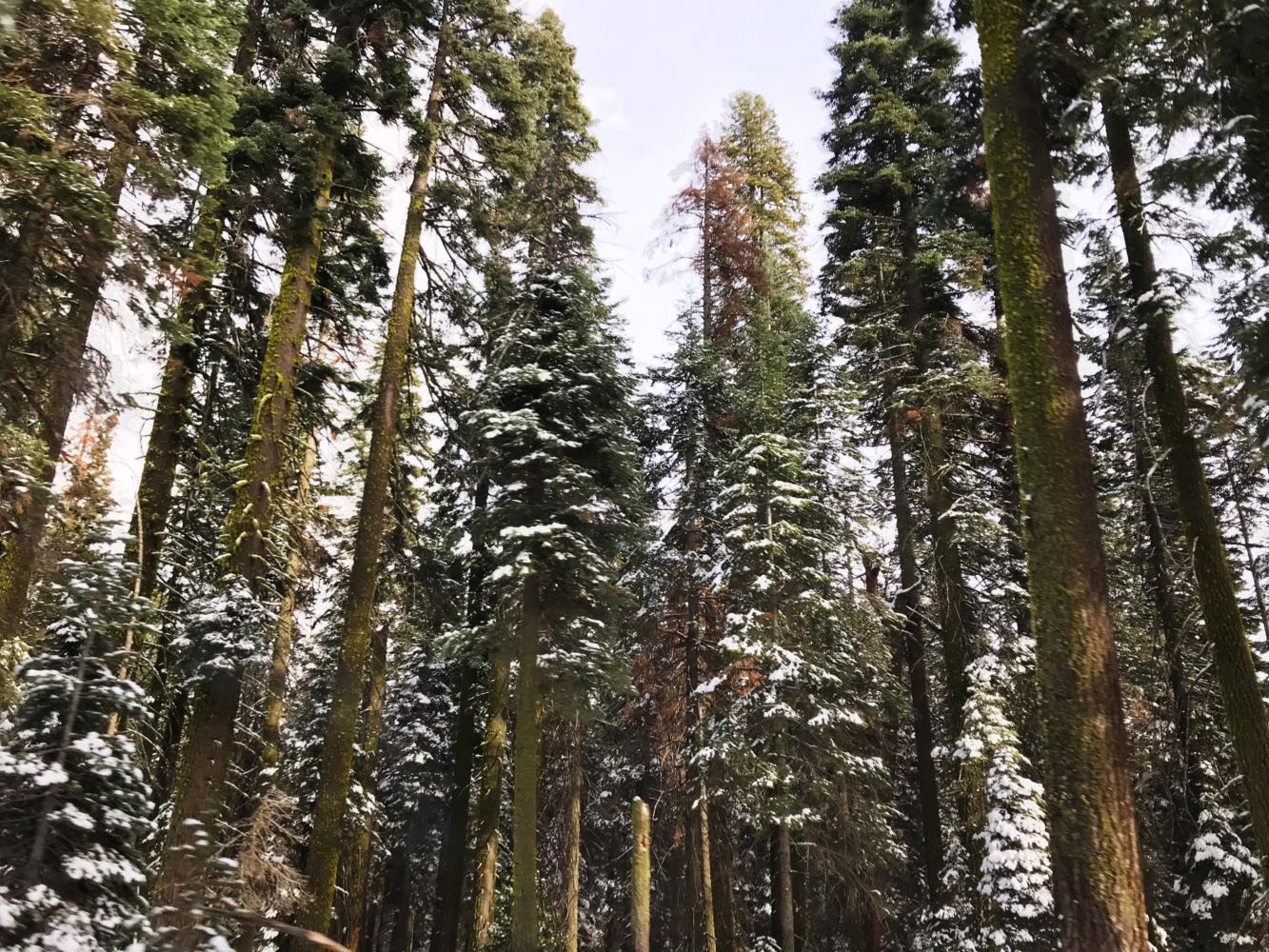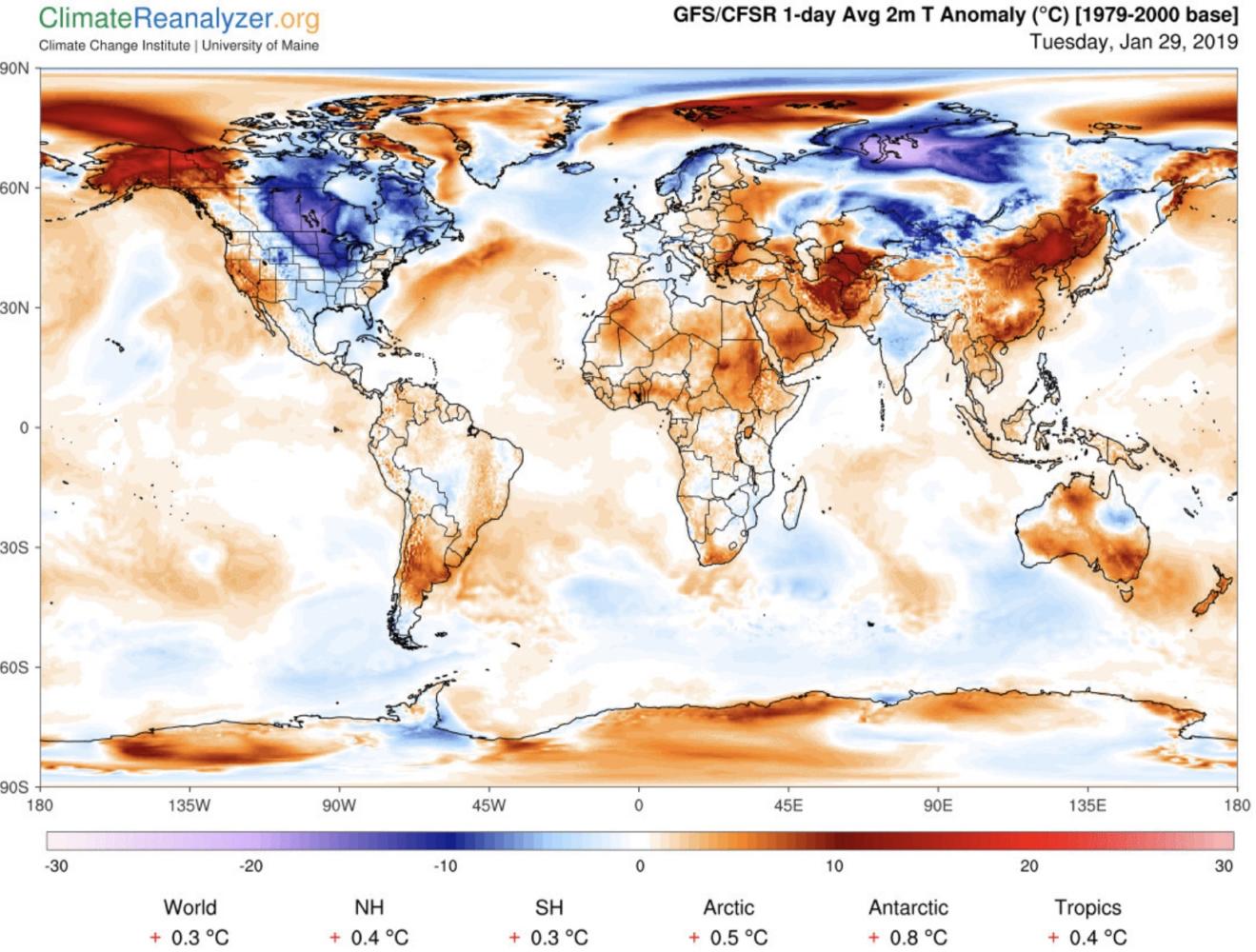
By: Savi Raghuraman | News Editor
January 30, 2019
“It’s been so cold,” senior Emilie Bennett said, shivering in the quad at a temperature of 61 degrees Fahrenheit. “I was not trained for this weather.”
While San Clemente residents face their own version of cold, other parts of the country are suffering from winter temperatures that were even more brutal than normal this week, exemplifying the complex consequences of climate change.
A mass of Arctic air known as the polar vortex has descended upon the Midwest, causing temperatures to fall below -30 degrees Fahrenheit and, thanks to extreme windchill, feel less than -60 degrees Fahrenheit in some areas. At least four states’ temperature lows have been broken. Officials warn that standing outside for five minutes could result in frostbite. Meanwhile, fleets of buses patrol cities at night, providing warm, mobile shelters for the homeless.
“My sister goes to college in Ohio,” senior Margaux Ranson said. “It’s so cold that they canceled her classes this week.”
Some have pointed to these conditions as casting doubt on climate change. Isn’t the earth supposed to be getting warmer? The key word here is “earth.” Climate change occurs on a global scale, and just because the earth’s temperatures are increasing on average doesn’t mean that they are increasing in every location, every day. The map below from the University of Maine compares current temperatures to the average between 1979 and 2000, illustrating that right now the earth is 0.5 degrees Fahrenheit warmer and that temperature extremes are widespread.

An important distinction between the effects of the polar vortex and global warming is the definition of weather versus climate. Weather constitutes day-to-day conditions, while climate is long-term. The current temperatures reaching 116 degrees Fahrenheit in Australia and 60 below zero in Wisconsin are weather; only when these extremes become consistently recurring patterns do they enter the scope of climate.
In fact, preliminary scientific evidence points to the likelihood that, as the climate shifts upwards, extremes, including extreme cold, will become the new norm. As the ice melts at the poles, which traditionally work to moderate the temperature of the rest of the globe, the Arctic warms at a disproportionate rate. The resulting change to atmospheric currents may have pushed the polar vortex out of its usual territory, causing the cold snap in the Midwest and the oppressive heat in Australia. Communities worldwide can expect such irregularities to increase in coming years as usual patterns of climate moderation are thrown off-kilter. However, it must be noted that these are just theories; not enough research has been done yet to solidify them.
Our understanding of extreme weather events is crucial to responding effectively to climate change. Global warming occurs on such a large scale that some tend to oversimplify it to just “warming,” and the polar vortex does not fit that bill. Yet, to propose and implement effective solutions, we must avoid assumptions and instead seek to comprehend climate change for the nuanced phenomenon it is.

Leave a Reply